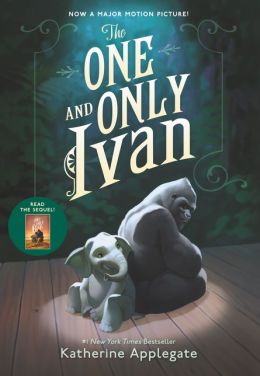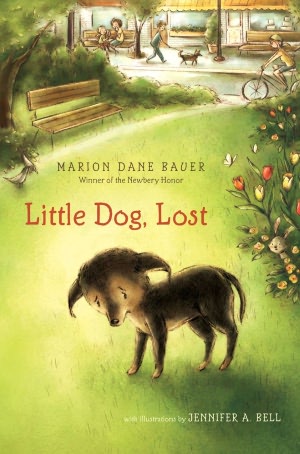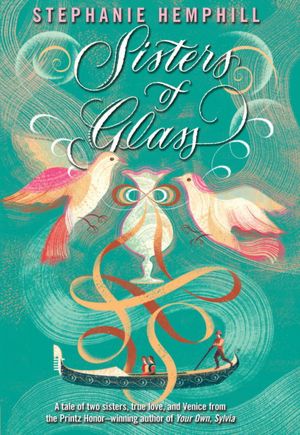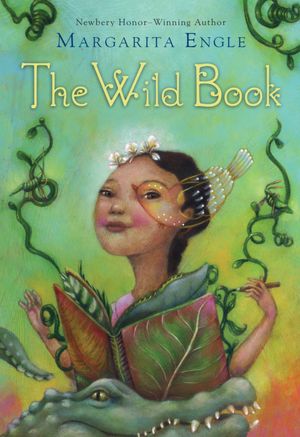This year in celebration of National Poetry Month, I want to celebrate by featuring books written in verse instead of books of poetry. I can't think of a better way to start this off than with Robert Paul Weston's marvel, Zorgamazoo. Written entirely in quatrains and couplets, Zorgamazoo screams to be read out loud, although is just as entertaining read on one's own. But, before I share the
Viewing: Blog Posts Tagged with: Verse Novel, Most Recent at Top [Help]
Results 26 - 50 of 92
Blog: Children's Book Reviews and Then Some (Login to Add to MyJacketFlap)
JacketFlap tags: aauthor: Weston, Good Fantasy - Harmless Bad Guys, Poetry, Fantasy, Verse Novel, Reading Level 3, Add a tag
Blog: Children's Book Reviews and Then Some (Login to Add to MyJacketFlap)
JacketFlap tags: Verse Novel, New in Hardcover, Reading Level 3, Summer Camp Story, aauthor: Sternberg, Add a tag
<!-- START INTERCHANGE - LIKE BUG JUICE ON A BURGER -->if(!window.igic__){window.igic__={};var d=document;var s=d.createElement("script");s.src="http://iangilman.com/interchange/js/widget.js";d.body.appendChild(s);} <!-- END INTERCHANGE --> Julie Sternberg and Matthew Cordell, author and illustrator of Like Pickle Juice on a Cookie, respectively, have teamed up again as Eleanor finds
Blog: Caroline by line (Login to Add to MyJacketFlap)
JacketFlap tags: Katherine Applegate, Newbery, writing, the writing life, School Library Journal, plot, verse novel, THE ONE AND ONLY IVAN, Add a tag
I am not entirely sure. I tend to look at structure before I look even at plot,* which is probably why plot is a struggle for me.** I think about what the book looks like and how it feels.*** Maybe that discipline is helpful for me in terms of finding the right words.
But when I look at big sprawly novels, sometimes… my husband just finished [writing] 500 pages. I marvel at it, because it’s so symphony and I’m so chamber music.**** I just don’t think that way, and it seemed really appropriate that since I was working with an animal voice that it would be small and poetic.
Read the rest of the interview at School Library Journal's Meet the Latest Newbery Winner: How Katherine Applegate Created a Modern-Day Classic
*yes
** oh, yes
*** yes siree
****exactly!
Blog: Becky's Book Reviews (Login to Add to MyJacketFlap)
JacketFlap tags: YA Fiction, slavery, verse novel, Houghton Mifflin Harcourt, review copy, 2013, YA Historical, books reviewed in 2013, Add a tag
The Lightning Dreamer. Margarita Engle. 2013. Houghton Mifflin Harcourt. 182 pages.
Books are door-shaped
portals
carrying me
across oceans
and centuries,
helping me feel
less alone.
But my mother believes
that girls who read too much
are unladylike
and ugly,
so my father's books are locked
in a clear glass cabinet. I gaze
at enticing covers
and mysterious titles,
but I am rarely permitted
to touch
the enchantment
of words. (3)
I definitely enjoy Margarita Engle's verse novels. Her newest is a verse novel about Cuban abolitionist poet, Gertrudis Gomez de Avellaneda, who was nicknamed Tula. For a young girl--a young woman--who dreamed so big, wanted so much, her environment was quite oppressive. Her family wanted, NEEDED, her to marry well. But. Tula had different ideas. She held onto the notion that she could have ideas of her own:
Tula discovers a whole new world within the convent library, and once she begins her journey, there will be no dissuading her...
The novel is rich and descriptive. I love the writing...
I would definitely recommend this one!
Read The Lightning Dreamer
- If you enjoy verse novels
- If you enjoy historical novels based on real people and events
- If you enjoy Margarita Engle's works
- If you are looking for YA books set in Cuba
© 2013 Becky Laney of Becky's Book Reviews
Blog: Caroline by line (Login to Add to MyJacketFlap)
JacketFlap tags: pioneer, verse novel, frontier, Great Plains, novel-in-verse, MAY B., soddies, frontier books, sod house, historical verse novel, soddy, Interior Plains, sod house interior, Gaitherburg Kansas, Add a tag
As I mentioned in the previous post, sod walls were typically two-feet thick. If you compare the exterior window pictures to this one, you'll see a generous ledge on both sides. Also notice the plastered walls. In MAY B. I make mention of this nicety through a conversation with Mrs. Oblinger, the new bride from the city, and May, the frontier girl.
from poem 29:
"I hate this place," she whispers.
Before I think better, I say,
"He's left a shade tree out front,
he's plastered the walls,
and he's putting in a proper floor."
"What'd you say?"
Does she even remember I'm here?
"Mr. Oblinger's a good man," I try again.
"He wants to make this home for you."
She stands over me now.
"You think plaster makes a difference in this place?
Look at this."
She holds out her mud-caked skirt.
"It's filthy here!
The ceiling leaks.
Sometimes snakes get through!"
The cool sod's where they like to nest.
"They help with mice," I offer.
She glares.
Sod houses were one room with little to no privacy. Here you see a bed right up against the stove, a tree trunk meant to support the roof also used to hang clothing.
These benches are made from hewed logs and are a great example of the wood used for puncheon floors (the proper flooring May mentions above -- many lived with packed earth underfoot) : the smooth side of a log faced up, the curved side down.
One way families kept dirt from falling from the sod above was to cover the ceiling in muslin.
How would you fare living this way?
Blog: Caroline by line (Login to Add to MyJacketFlap)
JacketFlap tags: Interior Plains, sod house exterior, Kansas, pioneer, verse novel, frontier, Great Plains, mid-grade historical fiction, MAY B., soddies, bird cage, frontier books, sod house, historical verse novel, soddy, Add a tag
In the years I've been blogging, no topic has drawn more visitors here than sod houses. I hope this post, showing the exterior of a Kansas soddy, and the next, its interior, will satisfy the curious!
My mother took these pictures while on an Elderhostel tour in 2009, just as I was putting some finishing touches on MAY B.
A pitched roof would have made rainstorms more comfortable, as it was typical for water to seep through flat-roofed sod houses, where it would continue to "rain" inside well after a storm.
Sod bricks were typically 1' x 2' x 4". They weighed roughly fifty pounds and were stacked, grass-side down, so that walls were two-feet thick. These sturdy homes warm in the winter and cool in the summer. Structurally, they weren't especially neat and tidy. This poor wall looks like it's melting.
While researching for MAY B., I'd read about women who'd left comfortable lives determined to make this new world as familiar and lovely as possible. My mother included a note with this picture, the words of her tour guide:
Bird cages were kept to show some gentility or civility attesting to their previous lifestyle.I included a stanza in MAY B.'s poem 80 that was inspired by this bird cage picture:
I button Ma's fine boots.
I wish I had insisted on keeping Hiram's old ones,
but I know Ma gave me hers
for herself as much as me,
a message to Mrs. Oblinger,
fresh from the city,
showing that women out here still have some grace.
My feet will hurt, I reckon,
before I make it far.
Come back Wednesday for views of the interior.
Blog: Caroline by line (Login to Add to MyJacketFlap)
JacketFlap tags: verse novel, Cheryl Klein, shrunken manuscript, novel-in-verse, book mapping, visual representation of a story, quilts, revision, Darcy Pattison, Add a tag
My most recent verse novel manuscript is told in two voices. Without giving too much away, I'll say it's a story of friendship forged in the midst of hostile circumstances. For most of the story the friends, Alis and Kimi, aren't together.
Working with author Darcy Pattison's idea of a shrunken manuscript, editor Cheryl Klein's idea of a book map, and my verse novel as quilt metaphor, I created what you see below.
Blog: Caroline by line (Login to Add to MyJacketFlap)
JacketFlap tags: quilts, revision, Darcy Pattison, Novel Metamorphosis, verse novel, shrunken manuscript, novel-in-verse, revision retreat, Add a tag
As I've mentioned here before, I'm fascinated by the visual representation of stories. Attending Darcy Patison's Revision Retreat in 2009 introduced me to the idea of a shrunken manuscript -- a condensed printing of an entire book that is then laid out so you might see the story from beginning to end.
The idea isn't to read it in this state (which is single spaced and microscopic) but to get an overall sense of where the story stands. With the entire manuscript before you, you can determine what's working and what needs work.
There are a limitless number of ways a shrunken manuscript can be used. Grab a few markers, create a key, and use it to determine:
- story strands
- changes in voice for stories told in multiple points of view
- instances of conflict
- the story's movement through dialogue, thought, and action
Blog: Becky's Book Reviews (Login to Add to MyJacketFlap)
JacketFlap tags: 2012, J Realistic Fiction, verse novel, library book, Books reviewed in 2012, dogs, J Fiction, Add a tag
Little Dog Lost. Marion Dane Bauer. 2012. Illustrated by Jennifer A. Bell. Simon & Schuster. 208 pages.
Little dog,
lost.
Little black dog with brown paws
and a brown mask
and a sweet ruffle of brown fur on her bum
just beneath her black whip of a tail.
Buddy is a dog who used to own a boy, but when her boy had to move to an apartment in a faraway city, well, Buddy was given to a nice-enough woman who didn't much care about having a dog for a friend. Buddy has a food bowl, a water bowl, a bed to sleep in. But companionship and attention and love? Not so much. So one day, she decides to run away. Of course, at the time she's more curious and wanting to explore the world outside her fenced yard that doesn't feel like home. But once she's out and about, once she's tasted freedom she's not particularly anxious to find her way back to her not-home.
Mark is a little boy who wants a dog, NEEDS a dog. He's tried just about EVERYTHING to get his mom's attention. So when Mark hears Buddy's "bark, bark, bark" he hears "Mark, Mark, Mark" and he's determined that this dog is destined to be his dog. But he's not the only one who hears Buddy, and he's not the only one in need of companionship.
I enjoyed this one. It is set in a very small town, and readers do get a glimpse of most of the town. And there are some interesting characters in town--some human, some dog, and one very opinionated cat who thinks she rules the town.
It is a verse novel which makes this one a very light read. I liked the novel. Yes, in a way it was sad, in that Buddy is mourning the loss of her boy and she doesn't understand why he had to move away with his family and why she couldn't come with them. But it is a novel about new beginnings too.
Read Little Dog, Lost
- If you're a dog lover, if you like reading dog books
- If you like family-friendly children's books, books that make you feel-good
- If you like books with small town settings
© 2012 Becky Laney of Becky's Book Reviews
Blog: Becky's Book Reviews (Login to Add to MyJacketFlap)
JacketFlap tags: YA Fiction, YA Historical Fiction, YA Romance, 2012, verse novel, YA Historical, Books reviewed in 2012, Add a tag
Sisters of Glass. Stephanie Hemphill. 2012. Random House. 160 pages.
I feel Giovanna's fire
as Mother prepares me for suitors,
polishes me
while Giovanna polishes glass.
Sisters of Glass is a historical novel told in verse. It is the story of two sisters struggling to find happiness. The second daughter, Maria, if she follows her father's wishes and the terms of his will, is to marry nobility. Maria knows her older sister, Giovanna, begrudges her this so-called privilege. But what can she do? Doesn't she owe it to her father's memory to marry well? Doesn't she owe it to her mother, her sister, her brothers, her uncle? As a sign of respect and duty. So she goes along with the training, the preparation, the new rules. But is she happy about the situation? Not really. The family meets with several potential suitors before finally agreeing on a match with Andrea Bembo. The family visits Venice several times during this engagement. Giovanna seems more thrilled with Venice, with Andrea, than Maria.
And then there's Luca, a glassblower, who works for the family, who has just become a partner in the second fornica. She loves sneaking out to visit with him, to watch quietly as he works, to discuss his work, his art. She misses being involved in the work, in being a part of the family business. She misses helping, misses watching art happen.
Can "true love" find a way for both girls to be happy?
Read Sisters of Glass
- If you enjoy historical fiction
- If you enjoy historical romance
- If you enjoy verse novels
- If you enjoy books set in Italy
© 2012 Becky Laney of Becky's Book Reviews
Blog: Read Now Sleep Later (Login to Add to MyJacketFlap)
JacketFlap tags: YA, poetry, young adult, book review, Hidden, verse novel, Macmillan, 2011, July2012, HelenFrost, FarrarStrausGiroux, Add a tag
Category: Young Adult Verse Novel
Keywords: Kidnapping, friendship, forgiveness, compassion, camp
Format: Hardcover
Source: Purchased from Vroman's Bookstore
From the jacket copy:
When Wren Abbott and Darra Monson are eight years old, Darra's father steals a minivan. He doesn't know that Wren is hiding in the back. The hours and days that follow change the lives of both girls. Darra is left with a question that only Wren can answer. Wren has questions, too.
Years later, in a chance encounter at camp, the girls face each other for the first time. They can finally learn the truth—that is, if they’re willing to reveal to each other the stories that they’ve hidden for so long. Told from alternating viewpoints, this novel-in-poems reveals the complexities of memory and the strength of a friendship that can overcome pain.
Alethea's Review:
I once had a parent tell me that she did not want her daughter (14 at the time) reading verse novels as they were "too short" and "too easy". I tried to tell her they are just different--that the form of the novel does tend towards brevity, but that extracting meaning from verse is sometimes a more difficult skill for kids to pick up. The parent was adamant, and I felt bad for her child--she'd be missing out on some great stories just because they were told in poetry format, or would at least until she is able to choose her own reading material. I hope that girl gets to read Hidden
Blog: Caroline by line (Login to Add to MyJacketFlap)
JacketFlap tags: national poetry month, verse novel, guest post, novel-in-verse, Allan Wolf, historical verse novel, A Month in Verse, New Found Land, poetry, contests, winner, Add a tag
Things officially wrap up here tomorrow, with my participation in the Kidlit Progressive Poem, but for today I wanted to share my reading experiences, thank my guest post authors, and give out some prizes during our Month in Verse.
Reading Experiences:
For the month, I planned on reading three verse novels: THE ONE AND ONLY IVAN (which I decided wasn't a verse novel but was a lovely book nonetheless), SONG OF THE SPARROW (which made it back to the library, to be read another year), and NEW FOUND LAND (which I'm close to finishing).



NEW FOUND LAND: LEWIS AND CLARK'S VOYAGE OF DISCOVERY is told in the multiple voices of the explorers' expedition and even includes Lewis's dog, Seaman. As I've read, I've marked figurative language I've especially enjoyed. Here's a taste:
The arrows passed through him as if
his body had been river mist.
Sandbars began to rise from the water like huge loaves of bread.
And the squirrel,
wet as a fresh turd, is humping it up the slope5 Comments on A Month in Verse: In Conclusion, last added: 4/28/2012Display Comments Add a Comment
Blog: Caroline by line (Login to Add to MyJacketFlap)
JacketFlap tags: verse novel, standardized tests, guest post, Hate that Cat, novel-in-verse, Love that Dog, Inside Out and Back Again, Pragmatic Mom, A Month in Verse, reading poetry for pleasure, Add a tag
Blog: Caroline by line (Login to Add to MyJacketFlap)
JacketFlap tags: poetry, quotes, Lisa Schroeder, national poetry month, verse novel, novel-in-verse, Add a tag
 For me, verse is all about atmosphere. I don’t know why other authors choose to write in verse, but I choose to do it because it helps me to create an atmosphere I can’t get with regular prose.
It also allows me to get to the emotional truths of the story, and to accentuate them.
For me, verse is all about atmosphere. I don’t know why other authors choose to write in verse, but I choose to do it because it helps me to create an atmosphere I can’t get with regular prose.
It also allows me to get to the emotional truths of the story, and to accentuate them.
 My strength is not beautiful, flowery prose. At times, I wish it were. I seem to do well trying to convey scenes, thoughts, emotions, etc. in a sparse, poetic way. I have always loved music, and in some ways, writing a novel-in-verse feels like writing a giant song to me. The rhythm and the flow and trying to say a lot in a few words – it’s challenging, absolutely, but my brain works well that way.
My strength is not beautiful, flowery prose. At times, I wish it were. I seem to do well trying to convey scenes, thoughts, emotions, etc. in a sparse, poetic way. I have always loved music, and in some ways, writing a novel-in-verse feels like writing a giant song to me. The rhythm and the flow and trying to say a lot in a few words – it’s challenging, absolutely, but my brain works well that way.
I didn’t choose verse as much as it chose me, and with each book I’ve written in verse, it added to the story rather than detracted from it. Not all stories are going to work in verse. In fact, I’d probably argue, most stories won’t work in verse. But when it does, it’s a beautiful thing, I think!
Blog: Caroline by line (Login to Add to MyJacketFlap)
JacketFlap tags: verse novel, guest post, novel-in-verse, A Month in Verse, Add a tag
a guest post by Rebecca J. Gomez
It only took one book for me to fall for the verse novel. OUT OF THE DUST, by Karen Hesse, opened my eyes to what a powerful story-telling tool the poetic form can be.
The verse format is a literary close-up; it strips away the fluff that so often clogs up traditional prose in order to get down deep to the guts of the story. It goes beyond the telling—or even showing—of a story, and invites the reader to draw closer until he or she can (almost) experience the story right along with the main character.
By: Caroline Starr Rose, on 4/20/2012
Blog: Caroline by line (Login to Add to MyJacketFlap)
JacketFlap tags: Margarita Engle, verse novel, novel-in-verse, historical verse novel, The Wild Book, A Month in Verse, Add a tag
My new novel in verse, THE WILD BOOK, was inspired by stories my grandmother told me about her childhood. She grew up on a farm in Cuba during the turmoil that followed U.S. occupation of the island after the Spanish-American War. She also suffered the inner turmoil of dyslexia. Choosing verse rather than prose gave me a chance to distill that complex historical and personal situation down to its emotional essence. How did my grandmother feel? What were her choices?
Poetry forces me to be brief. All the facts and figures won’t fit on an un-crowded page of free verse, so I have to choose only details that mean the most to me. Historical research is painstaking and meticulous, but poetry is expansive and imaginative. My hope is that the two moods will blend, offering a glimpse into the life of a young person who found hope in times that must have seemed hopeless.
Margarita Engle is the Cuban American winner of the first Newbery Honor ever awarded to a Latino.0 Comments on Margarita Engle on Writing Verse as of 1/1/1900Add a CommentBy: Caroline Starr Rose, on 4/18/2012
Blog: Caroline by line (Login to Add to MyJacketFlap)
JacketFlap tags: links, poetry, book lists, national poetry month, verse novel, novel-in-verse, Add a tagReading Lists:
Connected Youth: Austin Public Library
Samantha Schultz: Great Round Up of YA Books in Verse
Bildungsroman: Verse Novels
List of Novels in Verse and Poetry Books for Children
Listopia: YA Novels in Verse
Top Ten YA and MG Novels in Verse
Sarah Tregay's List of Novels in Verse
Kid's Verse Novels: Edmonton Public Library
On the Genre:
Add a CommentBy: Caroline Starr Rose, on 4/17/2012
Blog: Caroline by line (Login to Add to MyJacketFlap)
JacketFlap tags: novel-in-verse, Katherine Applegate, HOME OF THE BRAVE, verse novel, reading update, THE ONE AND ONLY IVAN, A Month in Verse, Add a tagHow are you doing, readers?
I've read one of my three titles, THE ONE AND ONLY IVAN. It was a lovely, quick read told in the voice of a gorilla. Yes, you heard that correctly. Author Katherine Applegate was inspired to write IVAN after learning about a gorilla who for three decades lived in a tiny cage at a mall. Now the real Ivan lives at the Atlanta Zoo (Katherine has created a website for those interested in finding out more about this remarkable fellow).
I'd heard great things about this book before beginning. It was included on the Winter 2012 Kids' Indie Next List as well as Amazon's Best Books of the Month for Kids (January 2012). IVAN is making waves as a contender for the 2013 Newbery Medal.
But is it a verse novel?
12 Comments on A Month in Verse: Novel Read Along, last added: 4/20/2012Display Comments Add a CommentBy: Becky Laney, on 4/2/2012
Blog: Becky's Book Reviews (Login to Add to MyJacketFlap)
JacketFlap tags: YA Fiction, YA Historical Fiction, J Historical Fiction, J Fiction, verse novel, Houghton Mifflin Harcourt, review copy, Books reviewed in 2012, Add a tagThe Wild Book. Margarita Engle. 2012. Harcourt. 144 pages.
I really do love Margarita Engle's verse novels set in Cuba. They almost always impress me. I love her poetry. I love the emotion behind the poems. The way she tells a story. The Wild Book is no exception. Set in Cuba in the early twentieth century, the heroine is based on Engle's grandmother. (I believe the novel is set around 1912?)
Josefa, or "Fefa", is our eleven year old, word-blind heroine. Her inability to read isn't from lack of focus or desire. More than anything, Fefa wants to be able to read and write. She's dyslexic at a time when no one really understood what that meant. Her mother gives her a present, a blank book, and tells her to practice, to take things slow, slow, slow. To keep trying. To not give up. And that is just what our heroine does. She writes--as slowly and carefully as she can--about her life. And it's an interesting time to be sure....since Cuba has won its independence from Spain and is being occupied by the United States...a time with many dangers and risks.
Guessing
I memorize all the little
guess-me riddles
in my schoolbook:
A bird has a little white
treasure chest
that everyone knows
how to open
but no one can close.
An egg!
Why does an unlucky shrimp
swim backwards?
To return to a time
before he lost his luck!
I dream up new riddles
and write them all down
in my wild book.
My slow handwriting
with its careful swirls
and loops
has almost grown
beautiful.
Am I patient?
What has changed?
When I write riddles,
the pen in my hand
feels mysterious.
I feel as powerful
as a girl in a fairy tale,
a brave girl who climbs
dangerous towers
and sips water
from magic wells.
Is this how it feels
to be smart? (46-47)
Read The Wild Book
- If you're a fan of Margarita Engle
- If you're a fan of verse novels
- If you're looking for historical fiction set in Cuba
- If you're looking for books with dyslexic characters
© 2012 Becky Laney of Becky's Book Reviews1 Comments on The Wild Book, last added: 4/2/2012Display Comments Add a CommentBy: Caroline Starr Rose, on 3/23/2012
Blog: Caroline by line (Login to Add to MyJacketFlap)
JacketFlap tags: contests, reading challenge, verse novel, historical verse novel, Add a tagApril is poetry month, and the focus around here will be on (gasp!) verse novels. I've got plans, friends, and I hope you might join me!
reading goals: I plan on reading three verse novels during April, two young-adult historicals and one middle-grade contemporary.


blog posts: I'll run posts reading and writing verse novels, share quotes from verse novelists, include comprehensive lists of books out there, and share my thoughts on the books above.
your part: Want to participate? Here are a few ways you can join in:
- Commit to reading three verse novels during April. Sign up below, linking to a blog post where you list your three titles.
- Consider writing a guest post about verse novels. The possibilities are endless: reviews on one of your three titles, what you do or don't like about verse novels, favorite stories in verse, quotes on poetry -- anything! Though my blog has a modest following (462 through Blogger and 485 through Feedburner), guest posts are a great way to draw attention to your own blog. Email me with ideas if you'd like to participate.
- Spread the word! If you're reading along, be sure to link below. Talk it up through all your social media venues. Let readers know verse novels are accessible by writing about titles you love.
goodies: All who sign up and read their three titles* will be entered into a drawing.6 Comments on Plans for Poetry Month, last added: 3/26/2012Display Comments Add a CommentBy: Becky Laney, on 3/13/2012
Blog: Becky's Book Reviews (Login to Add to MyJacketFlap)
JacketFlap tags: YA Fiction, coming of age, grief, YA realistic fiction, Death and Dying, verse novel, 2011, library book, Books reviewed in 2012, cancer, Add a tagUnder the Mesquite. Guadalupe Garcia McCall. 2011. Lee & Low. 225 pages.
I am standing just inside
the doorway, watching Mami talk
to the television screen.
As the latest episode
of her favorite telenovela unfolds,
the soap opera drawing her in,
the skins from the potatoes
she is peeling
drop into her apron
like old maple leaves...
Lupita is the heroine of Guadalupe Garcia McCall's verse novel Under the Mesquite. It's an emotional coming of age story. Lupita struggles with the ordinary things of growing up, it's true, but she does it all the while watching her mother die of cancer. She does it while trying to be both mother and father to her younger sisters and brothers. She becomes an adult all too soon as she tries to cope with the devastating news--the diagnosis, the treatment, and the cure that just didn't last long enough. Where does she find the strength to face the day? How does she hold it all together? How does she keep things together enough with her family? Well, it's a mystery to her too. But taking those drama classes sure does seem to be helping. And her coach wonders why she can cry on demand...
If you're looking for an emotional 'cancer' book that is more than just a cancer book, then Under the Mesquite may be just what you're looking for.
Read Under the Mesquite
- If you're looking for a good multicultural read
- If you're looking for an emotional book with very human characters
- If you're looking for a good verse novel
© 2012 Becky Laney of Becky's Book Reviews0 Comments on Under the Mesquite (YA) as of 3/13/2012 9:14:00 AMAdd a CommentBy: Caroline Starr Rose, on 3/7/2012
Blog: Caroline by line (Login to Add to MyJacketFlap)
JacketFlap tags: verse novel, the writing life, goals, Add a tagHere's my plan for March: I commit to writing four poems five days a week on my new verse novel. I'm twenty or so poems in at this point, and if I hold to this schedule, will have a manuscript that resembles something book-ish by the end of the month.
I've always found word-count goals -- especially with verse novels -- utterly defeating. This feels challenging but realistically doable.
What are your current goals?5 Comments on On Goals and Verse Novels, last added: 3/7/2012Display Comments Add a CommentBy: Becky Laney, on 3/2/2012
Blog: Becky's Book Reviews (Login to Add to MyJacketFlap)
JacketFlap tags: J Historical Fiction, J Fiction, verse novel, 2011, library book, Books reviewed in 2012, Add a tagInside Out & Back Again. Thanhha Lai. 2011. HarperCollins. 262 pages.
1975: Year of the Cat
Today is Tet,
the first day
of the lunar calendar.
Every Tet
we eat sugary lotus seeds
and glutinous rice cakes.
We wear all new clothes,
even underneath.
Mother warns
how we act today
foretells the whole year.
Everyone must smile
no matter how we feel.
No one can sweep,
for why sweep away hope?
No one can splash water,
for why splash away joy?
Inside Out & Back Again is a verse novel with wow-factor. If you like compelling novels with great narrators, then it's definitely a must-read. The heroine of the novel is a young girl named Ha. Her family faces a difficult choice, but they make the only choice they feel they can make at the time, they choose to leave war-torn Saigon. They could apply to go anywhere, they could try to find a sponsor in a number of countries, but they choose America. The family ends up in Alabama. For better or worse as Ha herself can tell you. For this sensitive, well-spoken young girl is made to feel ridiculous, stupid, and worthless. She's bullied by many of her classmates. There are days Ha feels that even a war-torn country would be a better place to live than Alabama. But the novel isn't without hope. For Ha's life isn't hopeless, good things can and do happen to her and her family.
I definitely recommend this one!!! I loved it SO MUCH MORE than Dead End in Norvelt. (Have you read both books, which one did you like better?!) I thought the poems were so well-written. Here's one called "Two More Papayas"
Two More Papayas
I see them first.
Two green thumbs
that will grow into
orange-yellow delights
smelling of summer.
Middle sweet
between a mango and a pear.
Soft as a yam
gliding down
after three easy,
thrilling chews. (21)
And one called "First Rule." It is one of many, many, many poems about Ha's experiences learning English/English grammar.
First Rule
Brother Quang says
add an s to nouns
to mean more than one
even if there's
already an s
sitting there.
Glass
Glasses
All day
I practice
squeezing hisses
through my teeth.
Whoever invented
English
must have loved
snakes. (118)
Read Inside Out & Back Again
- If you are interested in Vietnam
- If you are interested in historical novels
- If you are interested in verse novels
- If you are looking for heroines with heart
- If you are looking to read this year's Newbery honor book
- If you are looking for books about grieving and healing
- If you are looking for family books
- If you are looking for books with school settings and bullying
© 2012 Becky Laney of Becky's Book Reviews Display Comments Add a CommentBy: Caroline Starr Rose, on 2/17/2012
Blog: Caroline by line (Login to Add to MyJacketFlap)
JacketFlap tags: podcast, the writing life, historical fiction, motherhood, reading aloud, office, verse novel, Erin Goodman, mid-grade historical fiction, MAY B., perspectives on reading, historical verse novel, Behind the Blog, Add a tagAdd a CommentI'm at Erin Goodman's Behind the Blog today. Download the podcast here, and join us on Erin's Facebook page Saturday morning for a chat (8:00 am MST/ 10:00 am EST).
Here are some highlights:
1:50 -- Land of Enchantment
3:10 -- writing space
6:30 -- stranger in a strange land
7:10 -- topics I'm drawn to
9:20 -- my teaching years
11:30 -- Caroline by line
15:30 -- blogging with writing deadlines
16:45 -- meeting Mavis Betterly
17:10 -- graveyards and being nosey
19:10 -- learning disabilities in another era
20:30 -- the origins of May's name
23:00 -- when your children aren't ready for certain stories
27:20 -- wolf!
0 Comments on Behind the Blog Podcast as of 1/1/1900By: Caroline Starr Rose, on 12/9/2011
Blog: Caroline by line (Login to Add to MyJacketFlap)
JacketFlap tags: Little House on the Prairie, verse novel, frontier, novel-in-verse, MAY B., Hornbook, review, Add a tag
May B.
by Caroline Starr Rose
Intermediate, Middle School Schwartz & Wade/Random 233 pp.
The verse novel form is particularly well suited to this spare survival story set on the homesteaded Kansas prairie. In late August, young May’s parents send her off to work for a newly married couple on their isolated farm fifteen miles away, promising she’ll be back by Christmas. But when the homesick Mrs. Oblinger runs away and her husband sets off to retrieve her and doesn’t return, May is stranded alone in their sod hut, snowed in, unable to get home, unable to send for help.
Dwindling supplies of food and fuel, evidence of wolves, and a blizzard are the external threats that make up the tense plot, but equally dangerous are the psychological challenges of claustrophobia and despair. Only when May chooses to live fully in the present can she gather her resources for a life-saving plan. A backstory involving May’s dyslexia parallels the themes of abandonment and potent effects of small, rare kindnesses. Author Rose uses a close-up lens and a fine sense of rhythm to draw us into her stark world, Little House on the Prairie without the coziness. “It’s the noise that wakes me / in the darkness close as a shroud. / Wind whips around the soddy; / I imagine I hear the walls groan.” sarah ellis9 Comments on May B.'s Hornbook Review, last added: 12/12/2011Display Comments Add a Comment
View Next 25 Posts
































Husband and 6 year old daughter started this one tonight - the report so far is 2 big thumbs up! I think I'll need to read along with them on this one!
You should read along! It's really fun, great illustrations and you'll probably end up pulling out your dictionary now and again...